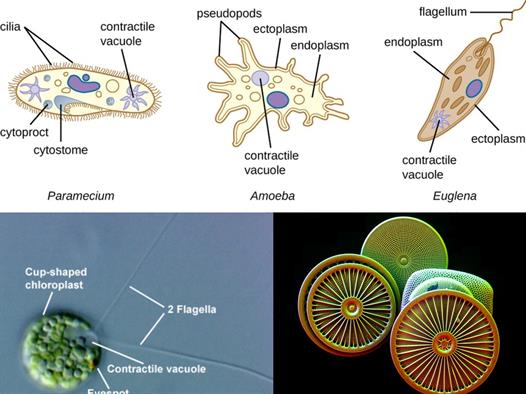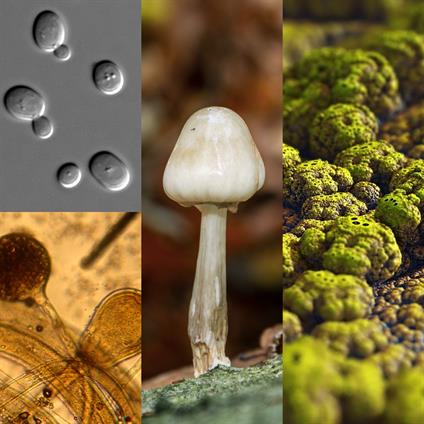
PUMPA - SMART LEARNING
எங்கள் ஆசிரியர்களுடன் 1-ஆன்-1 ஆலோசனை நேரத்தைப் பெறுங்கள். டாப்பர் ஆவதற்கு நாங்கள் பயிற்சி அளிப்போம்
Book Free DemoProtista:
It is a group that includes unicellular eukaryotic organisms. They may or may not have cell walls. Appendages such as hair-like cilia or whip-like flagella are the locomotory structures used by these organisms to move around. They are both autotrophic and heterotrophic. These organisms are also known as primitive animals.
Example:
The unicellular algae, diatoms and protozoans such as amoeba, paramecium and euglena

Clockwise from top to bottom: Paramecium, Amoeba, Euglena, Diatoms, Algae
Fungi:
It is a group that includes multicellular non-green eukaryotic organisms. A few organisms among these use decaying organic material as food. These type of organisms are known as saprotrophs.
Some of them which depend on the living protoplasm for their food are known as parasites. Most of the fungi have the capability of becoming multicellular organisms at particular stages of their lives.
Important!
The cell wall of fungi is made up of a tough complex sugar called chitin.
Example:
Yeasts, moulds, mushrooms or Agaricus and rhizophus

Clockwise from top: Yeast, Mushroom, Mould, Rhizopus
Reference:
https://upload.wikimedia.org/wikipedia/commons/thumb/f/fc/OSC_Microbio_05_01_locom.jpg/1024px-OSC_Microbio_05_01_locom.jpg
https://www.flickr.com/photos/zeissmicro/18949370752/in/photostream/
https://www.flickr.com/photos/fickleandfreckled/6793273042
https://www.flickr.com/photos/vacuela/1487022229
https://commons.wikimedia.org/wiki/File:Figure_09_04_01.jpg
https://libreshot.com/beautiful-small-mushroom/
https://www.flickr.com/photos/zeissmicro/18949370752/in/photostream/
https://www.flickr.com/photos/fickleandfreckled/6793273042
https://www.flickr.com/photos/vacuela/1487022229
https://commons.wikimedia.org/wiki/File:Figure_09_04_01.jpg
https://libreshot.com/beautiful-small-mushroom/